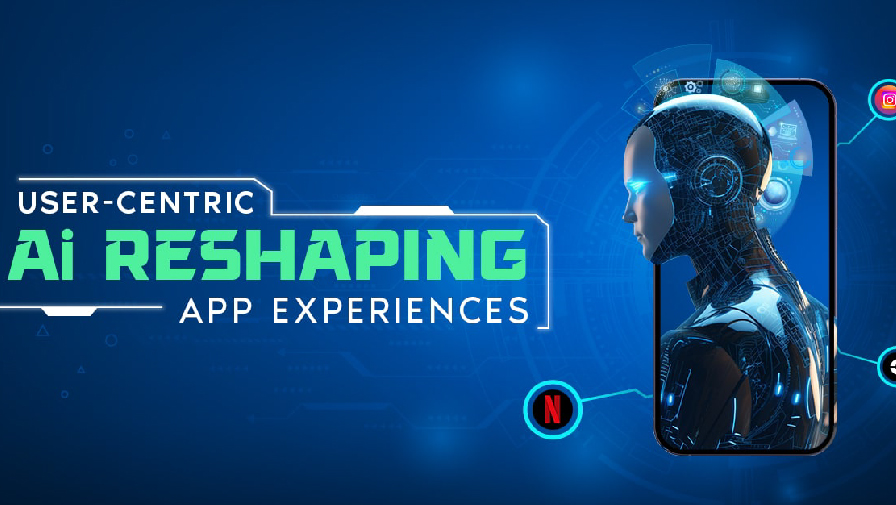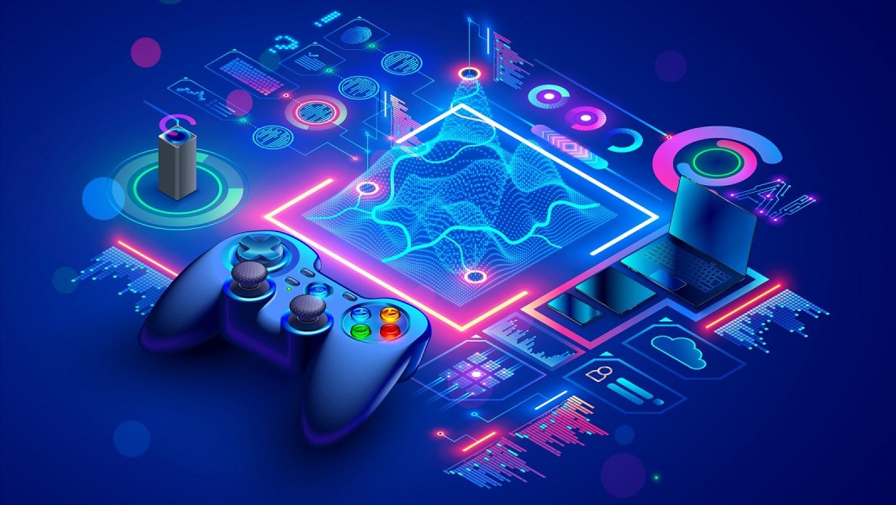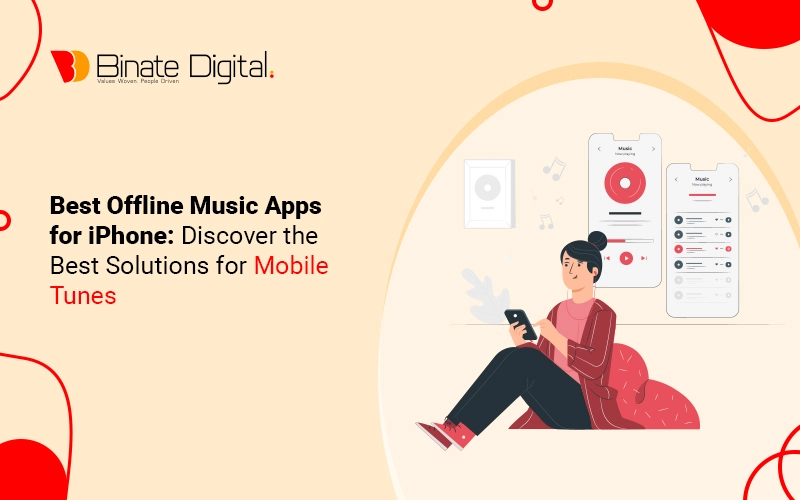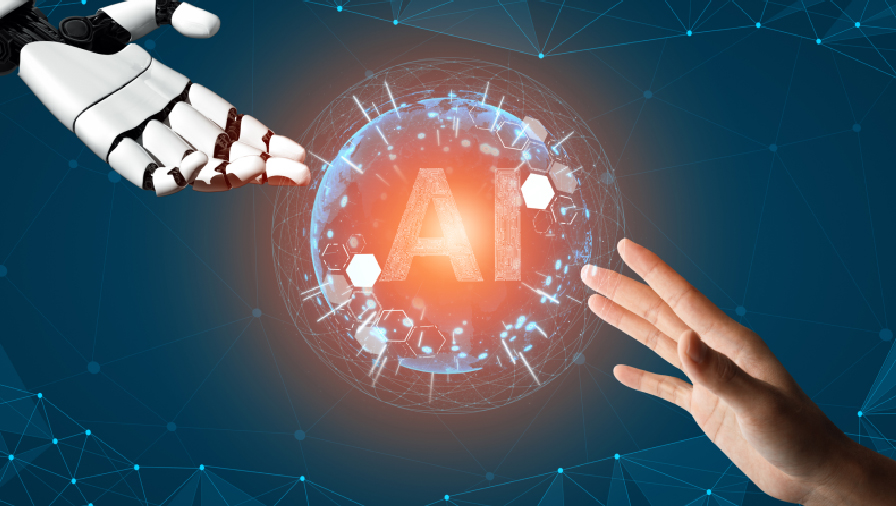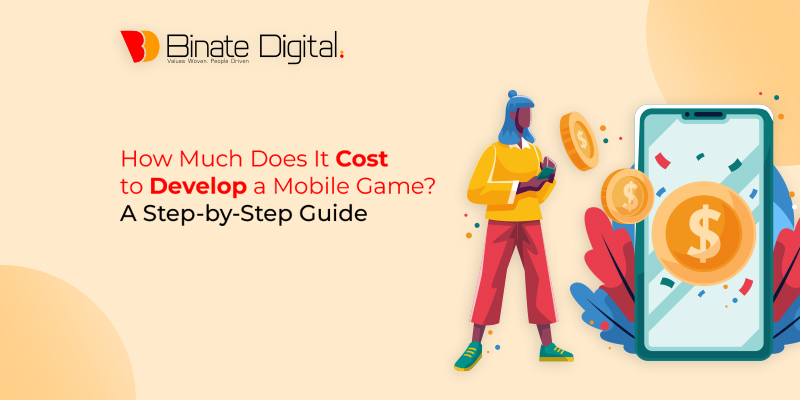On this Article
Introduction
Artificial intelligence is no longer a new term; it’s an independent revolution in mobile application development. From enhancing user experience to automating tedious tasks, AI is changing the very foundation and use of apps. Businesses are finding unique ways to incorporate artificial intelligence into their applications, thereby making apps smarter, faster, and more secure. But alongside these advancements, issues have arisen. Let’s dig deeper into how AI is revolutionizing mobile app development services and what the future holds for this.
AI-Driven Features for Better UX
Artificial Intelligence is changing how mobile apps interact with users. AI-powered features like personalized recommendations and chatbots make apps more intuitive and user-friendly. For example, streaming apps suggest content tailored to your tastes, while e-commerce apps learn your shopping habits to show items you’re more likely to buy. AI also enables real-time language translation and advanced search functionalities, making apps more accessible globally.
Streamlining Development Processes with AI Tools
Developers are finding it easier to build apps thanks to AI tools. These tools can:
- Automatically generate code for repetitive tasks.
- Identify bugs and suggest fixes in real time.
- Optimize app performance by analyzing user data.
This means developers can focus on creative problem-solving while AI handles the mundane stuff. Some AI tools even predict what a developer might need next, speeding up the workflow.
Leveraging AI for Predictive Analytics in Apps
Predictive analytics is one of the most exciting applications of AI in mobile apps. By analyzing user data, AI can forecast trends and behaviors. For instance:
- Fitness apps can predict when you’re most likely to work out and send reminders.
- Financial apps can warn you about potential overspending based on your habits.
- Travel apps can suggest trips based on your past bookings and preferences.
With AI, apps are not just tools; they become smarter companions that anticipate user needs and adapt accordingly.
AI Automation in Enterprise Software
Automating Routine Coding Tasks
AI is making it easier to handle repetitive coding tasks that used to eat up developers’ time. By automating these mundane activities, teams can focus on more innovative and complex aspects of software development. For instance, AI tools can auto-generate boilerplate code, suggest improvements, and refactor existing code for better performance. This speeds up the development process and reduces errors caused by manual coding.
Key benefits include:
- Faster code generation for routine tasks.
- Reduced human error in repetitive processes.
- More time for developers to work on creative problem-solving.
Improving Software Testing and Debugging
Testing and debugging are critical but often time-consuming stages of software development. AI tools are stepping in to make these processes more efficient. Machine learning algorithms can predict potential bugs, run automated test cases, and even suggest fixes. Some platforms can analyze historical data from previous projects to identify patterns that lead to common errors.
Here’s how AI enhances testing and debugging:
- Automated generation of test cases based on code structure.
- Real-time error detection and suggestions for resolution.
- Historical data analysis to prevent recurring issues.
Enhancing Scalability and Performance
Scalability and performance are major concerns for enterprise software, especially in today’s fast-paced digital landscape. AI can monitor application performance in real time, identifying bottlenecks and suggesting optimizations. It can also predict future scalability needs based on usage patterns, ensuring systems remain robust under varying loads.
A quick look at AI’s role in this area:
- Real-time performance monitoring.
- Predictive analytics for scalability planning.
- Automated resource allocation to maintain system stability.
AI isn’t just a tool; it’s becoming a co-developer in enterprise software, taking on tasks that once required significant manual effort. This shift enables businesses to innovate faster and deliver better solutions to their users.
AI and Security in Mobile App Development
Detecting and Mitigating Security Vulnerabilities
AI is proving to be a game-changer in identifying and addressing security risks in mobile apps. Using machine learning algorithms, AI can analyze patterns in code and detect potential vulnerabilities that human developers might overlook. For example, it can flag outdated libraries, weak encryption methods, or suspicious user behavior that could indicate an ongoing attack. This proactive approach significantly reduces the chances of data breaches.
Here are some common ways AI is used for vulnerability detection:
- Real-time analysis of code for weak spots.
- Monitoring app usage to detect unusual patterns.
- Identifying outdated or risky third-party dependencies.
Implementing AI-Driven Authentication Systems
Traditional methods, such as passwords, are no longer sufficient to protect sensitive data. AI-powered authentication systems, such as facial recognition and behavioral biometrics, are becoming the norm. These systems learn user behavior over time, making it harder for unauthorized users to gain access. For instance, an AI system might notice if someone’s typing speed or swipe pattern doesn’t match the usual behavior, flagging it as a potential security threat.
Common AI-driven authentication methods include:
- Facial and voice recognition.
- Behavioral biometrics, like typing patterns.
- Multi-factor authentication boosted by AI analysis.
Ensuring Data Privacy with AI Algorithms
Data privacy is a huge concern, especially given the increasing number of user data apps collect. AI helps by encrypting data smarter and ensuring compliance with privacy laws like GDPR. It can also identify data that doesn’t need to be stored, reducing the risk of leaking sensitive information. Moreover, AI systems can simulate potential data breaches to test an app’s resilience.
Developers are now relying on AI to protect data and make privacy an integral part of the app’s design from the start. This shift is critical in today’s regulatory landscape.
In summary, AI is not just enhancing security in mobile apps—it’s reshaping how we think about protecting user data and privacy. From smarter vulnerability detection to advanced authentication and robust privacy measures, the role of AI in mobile app security is only set to grow.
AI’s Future in Enterprise Mobile Solutions
AI-Driven Decision-Making in Business Apps
AI is no longer just a fancy add-on; it’s becoming the brain behind many business applications. Companies use AI to analyze massive amounts of data and provide insights that help decision-making. For instance, sales apps can now predict customer behavior, while financial tools can flag potential risks. This shift means businesses can act faster and smarter, staying one step ahead of competitors.
Here’s how AI is changing decision-making:
- Real-time analytics for quicker responses.
- Predictive modeling to foresee trends.
- Automated reporting to save time and resources.
Integrating AI with IoT for Smarter Applications
The results can be mind-blowing when AI and the Internet of Things (IoT) collaborate. Imagine a mobile app that tracks your fleet of delivery trucks, predicts maintenance needs, and optimizes routes based on traffic patterns. That’s the power of AI and IoT working together.
Key areas where this integration shines:
- Smart homes and devices that learn user preferences.
- Industrial IoT for predictive maintenance.
- Healthcare apps monitor patient vitals in real time.
Exploring Generative AI for Content Creation
Generative AI is the cool new kid on the block. It’s helping companies create everything from marketing copy to app designs without breaking a sweat. Need a chatbot script? Done. Want a social media post? Generated in seconds. But it’s not just about speed—it’s about creativity, too. Generative AI tools are learning to mimic human writing and design styles, making the content feel more authentic.
The future of enterprise mobile app development includes integrating AI and machine learning, rising cloud-based mobile applications, adopting low-code and no-code development platforms, implementing 5G technology, and focusing on enhanced mobile security. Learn more about these trends shaping the industry.
Challenges of AI in Mobile App Development
Addressing Ethical Concerns in AI Usage
When weaving AI into mobile apps, ethical considerations become a big deal. Bias in algorithms, for instance, can lead to unintended consequences, like unfair user experiences. To avoid such pitfalls, developers must ensure AI models are trained on diverse datasets. Then there’s the issue of job displacement—how much automation is too much? Striking a balance between human oversight and AI-driven automation is crucial. And let’s not forget about intellectual property concerns. Who owns AI-generated content? These are questions that don’t have clear answers yet.
Overcoming Technical Limitations
AI is cool, but it’s not perfect. Training models can be resource-heavy, requiring tons of processing power and data, which often means higher costs and longer development timelines. Plus, integrating AI with existing systems can be a headache. Compatibility issues arise, especially when AI-generated code doesn’t align with a project’s architecture. Testing and debugging also become more complex as developers must verify that the AI works well within the app’s ecosystem. Managing dependencies and ensuring smooth functionality are not as easy as they sound.
Balancing Human Oversight with AI Automation
AI can speed up development, but it does not replace human judgment. Developers must monitor how AI tools are used closely to avoid mistakes. For example, AI might suggest code that introduces security vulnerabilities or doesn’t meet the app’s standards. Human oversight ensures that AI remains a tool, not a decision-maker. It’s about collaboration—using AI to handle repetitive tasks while humans focus on creativity and problem-solving.
The real challenge is not just adopting AI but doing so responsibly. Developers must weigh the benefits against the risks to create innovative and trustworthy apps.
Conclusion
AI is shaking up the way enterprise software gets built, and it’s just the beginning. Developers are no longer just writing code—they’re working alongside AI tools that can handle repetitive tasks, spot errors, and even suggest solutions. This shift is speeding up projects and opening up new possibilities for what software can do. But it’s not all smooth sailing. Companies must figure out how to balance AI’s capabilities with human creativity and decision-making. As AI keeps evolving, the challenge will be to use it wisely, making sure it helps rather than complicates the process. Ultimately, it’s about finding that sweet spot where technology and people work together to create something better.

